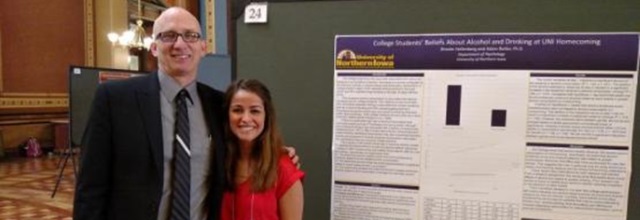Honors Program Theses
Award/Availability
Open Access Honors Program Thesis
First Advisor
Kavita Dhanwada
Abstract
Atrazine is one of the most abundantly used herbicides in the United States. It works by inhibiting photosynthesis in broad leaf and grassy weeds. Consequently, with its frequent use, atrazine can contaminate many drinking water sources due to run-off from treated fields. While many studies have shown detrimental effects occur in various model organisms using very high levels of atrazine, not much is known about what effects occur due to lower levels of atrazine exposure. The current research project analyzed the effects of atrazine on human liver cells (HepG2). Specifically, we focused on the proteins that regulate cell cycle progression through the Gap 1 phase, D 1 and E cyclin. A critical threshold level of these cyclins must be reached before the cell can proceed into S phase of the cell cycle. Timecourse experiments were performed to determine if the expression of D 1 and E cyclins was altered in the presence of atrazine. For the timecourse, HepG2 cells were treated with either 300 ppb or 500 ppb concentrations of atrazine and compared to cells that have not been exposed to the herbicide (0 ppb ). Nuclear proteins were isolated at particular times after exposure with herbicide (0, 4, 8, 12, 24, and 48 hours). The nuclear proteins were quantified and analyzed by Western Blot analysis to compare the expression of cyclins from control vs. untreated cells. Data suggests that the expression of D 1 cyclin is not altered in atrazine treated cells compared to control samples, while cyclin E expression is decreased in atrazine treated cells compared to control samples.
Year of Submission
2009
Department
Department of Biology
University Honors Designation
A thesis submitted in partial fulfillment of the requirements for the designation University Honors
Date Original
5-2009
Object Description
1 PDF file (v, 26 pages)
Copyright
©2009 Erin M. Schrunk
Recommended Citation
Schrunk, Erin M., "Timecourse Analysis of the Effect of Atrazine on Human HepG2 Cells" (2009). Honors Program Theses. 785.
https://scholarworks.uni.edu/hpt/785




Comments
If you are the rightful copyright holder of this thesis and wish to have it removed from the Open Access Collection, please submit a request to scholarworks@uni.edu and include clear identification of the work, preferably with URL.